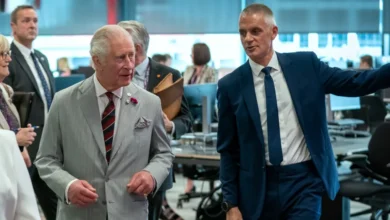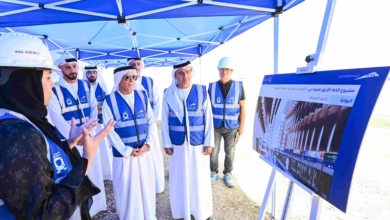
COP29 Nations Endorse New International Carbon Market Standards
World leaders at the COP29 climate conference have made a breakthrough in global climate action. The meeting in Baku, Azerbaijan led to an agreement on complete international carbon market standards. This marks a crucial step in the fight against climate change. The leaders created clear rules that allow carbon credit trading between countries and established a unified approach to cut emissions.
These new standards line up with environmental goals and create a framework that helps countries work together better. Nations can now track and trade carbon credits while protecting the environment’s integrity. Years of negotiations have resulted in this agreement that paves the way for stronger climate action through standard carbon market systems.
Understanding the New Carbon Market Standards
COP29’s new carbon market standards create a complete framework under Article 6.4 of the Paris Agreement. The Article 6.4 Supervisory Body developed these standards with two vital components:
• A standard that defines how to develop and assess projects • A standard focused on greenhouse gas removal projects
This framework’s mandatory safeguards prevent damage to environment and violations of human rights – marking a first in UN climate processes. Developers must provide a full picture of risks across eleven key areas. These areas cover land and water usage, human rights, health, and Indigenous Peoples’ rights.
Rich nations can buy credits from countries that surpass their climate goals to offset emissions. Independent auditors will verify each project to ensure it meets criteria and helps achieve sustainable development goals. Market integrity stays protected through an appeals process and monitoring system.
The Supervisory Body can update these adaptable standards as markets change. This approach will give a carbon market that tackles new challenges while protecting environmental integrity. A trusted and clear system for international carbon trading marks this framework’s biggest achievement.
The Path to Agreement at COP29
Negotiators at Baku broke years of deadlock. They quickly reached an agreement on day one of climate talks and adopted significant operational standards for international carbon markets. The Article 6.4 Supervisory Body took an innovative approach by setting two fundamental standards that were long overdue:
• Requirements for developing and assessing projects under the Paris Agreement • Standards for greenhouse gas removal activities
A smart change in approach paved the way to agreement. The Supervisory Body adopted the elements as ‘standards’ instead of seeking consensus on every technical detail. This flexible approach allows future adjustments as market conditions evolve. Their agility helped overcome previous roadblocks that had stymied progress at COP28, especially when you have forest credits and deforestation risks to consider.
The quick adoption sparked concerns among some delegates and environmental organizations about transparency in procedures. Critics cautioned that the accelerated process might create a worrying precedent for future climate negotiations. Many stakeholders recognized the urgent need to get the carbon market mechanism running, even with these concerns. They saw its potential to speed up climate finance flows to developing nations.
This agreement strikes a careful balance between market integrity and practical implementation. The foundation for a functional global carbon market now exists at COP29 in Azerbaijan, though some technical aspects need refinement. These include post-crediting monitoring periods and reversal risk assessments.
Implications for Global Climate Action
International carbon market standards have created a turning point for global climate action. These standards could cut the costs of national climate plans by AED 918.03 billion each year through better cross-border cooperation, according to financial forecasts.
Participating nations will benefit from several key improvements:
• A resilient infrastructure of buffer pools to handle reversal risks • Downward baseline adjustments that line up with Paris Goals • Better protection against unsustainable emission levels • Advanced monitoring and verification systems
Developing nations can now take part in global carbon markets more effectively. Clear methods for project development and verification help countries earn from their climate actions while protecting environmental integrity. The Paris Agreement Crediting Mechanism now offers stronger oversight than ever before. The Article 6.4 Supervisory Body retains control to review and adjust standards as markets change.
These changes are a vital step toward building a fairer and more efficient global carbon market. The framework adapts to new challenges while keeping strict environmental safeguards that climate action needs. This mix of flexibility and accountability makes the carbon market essential to reaching the Paris Agreement’s bold climate goals.
Next Steps and Remaining Hurdles
The progress at COP29 in Baku looks promising, but several important parts of the international carbon market framework need work. Countries still need to negotiate and implement the Article 6.2 registry that enables bilateral trades. Some major challenges remain:
• Requirements for reporting and country authorization • Market oversight and governance structures • Protection against double-counting emissions • Rules for forest carbon and biomass-based removal
Countries must submit updated Nationally Determined Contributions (NDCs) by February 2025. This deadline creates urgency to complete these technical aspects quickly. The Clean Air Task Force believes strong transparency measures will help rebuild trust in voluntary carbon markets.
African nations want to implement Article 6, and international support organizations help make this possible. Building capacity in a variety of geographical regions depends on technical assistance and knowledge sharing between peers.
The Article 6.4 Supervisory Body needs to tackle the risk of stored carbon leaking back into the atmosphere through events like fires. Environmental groups want more transparent decision-making processes and believe future negotiations should focus on reliable governance structures.
The carbon market standards agreement at COP29 marks a turning point in global climate action. These detailed standards connect ambitious climate goals with real-world implementation. They create clear rules for carbon credit trading that protect our environment. The new reliable framework gives market participants the right balance of strict oversight and flexibility. This enables countries to work together more effectively to reduce emissions.
The standards’ success depends on solving technical challenges and helping nations build their capabilities. Several issues need attention, including governance structures and verification methods. However, COP29 has created a strong foundation that helps the global community speed up climate action through market solutions. These standards open a new phase of international climate cooperation. They give countries the tools they need to meet their Paris Agreement commitments and promote sustainable growth.







[…] Nahyan’s 2-year old framework has led the Environment Agency – Abu Dhabi to classify environmental violations into three distinct […]